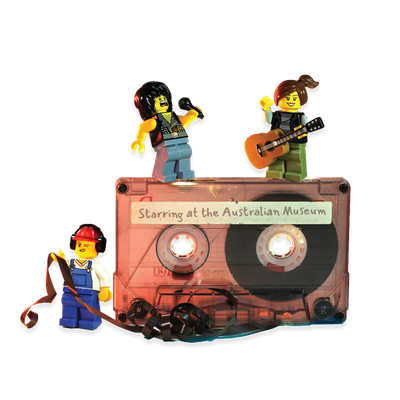Your search returned 50 results
By Page Type
By Tag
- All
- fish (966)
- blog (698)
- fishes of sydney harbour (400)
- First Nations (293)
- Blog (236)
- AMRI (169)
- archives (165)
- Aboriginal and Torres Strait Islander (135)
- Eureka Prizes (131)
- insect (126)
- Ichthyology (125)
- geoscience (109)
- minerals (102)
- climate change (98)
- podcast (94)
- Fish (91)
- Anthropology (89)
- International collections (80)
- Minerals Gallery (78)
- wildlife of sydney (78)
- Labridae (77)
- frog (73)
- gemstone (70)
- history (63)
- photography (63)
- staff (61)
- Mollusca (60)
- gem (59)
- Birds (58)
- education (57)
- Gems (56)
- Indonesia (56)
- AMplify (54)
- shark (54)
- people (53)
- exhibition (51)
- earth sciences (50)
- past exhibitions (50)
- Gobiidae (48)
- Pomacentridae (45)
- sustainability (45)
- Serranidae (44)
- science (43)
- lifelong learning (42)
- Earth and Environmental Science (41)
- Syngnathidae (41)
- Ancient Egypt (40)
- Bali (40)
- bird (40)
- dangerous australians (40)
-
Volcanic landforms
https://australian.museum/learn/minerals/shaping-earth/volcanic-landforms/Each type of volcanic massif (structure) contains lavas, pyroclastic rocks and intrusions, but these differ in proportions and compositions.
-
Sedimentary processes
https://australian.museum/learn/minerals/shaping-earth/sedimentary-processes/Sediments are formed by the breakdown (both physical and chemical) of pre-existing rocks, which may be of igneous, metamorphic or sedimentary origin.
-
Radioactive dating
https://australian.museum/learn/minerals/shaping-earth/radioactive-dating/Radioactive dating is a method of dating rocks and minerals using radioactive isotopes. This method is useful for igneous and metamorphic rocks, which cannot be dated by the stratigraphic correlation method used for sedimentary rocks.
-
Pyroclastic processes and materials
https://australian.museum/learn/dinosaurs/pyroclastic-processes-and-materials/Pyroclastic means 'fire broken' and is the term for rocks formed from fragments produced by volcanic explosions.
-
Glossary of geoscience terms
https://australian.museum/learn/minerals/shaping-earth/glossary-geoscience-terms/Geoscience (also known as earth sciences and geology) is the study of the Earth and includes all non-living parts of our environment, and everything below the Earth's surface. Here are some common geoscience terms explained.
-
Building Materials
https://australian.museum/learn/minerals/geological-deposits/building-materials/Perhaps the most important geological deposits are those that we use for building purposes. These come from all geological environments.
-
Wave Rock
https://australian.museum/learn/australia-over-time/evolving-landscape/wave-rock/Wave Rock is in the wheat belt region of Western Australia, 350 km south-east of Perth.
-
The 'Barratta' Meteorite
https://australian.museum/learn/collections/natural-science/mineralogy/mineralogy-collection-the-barratta-meteorite/The story of the 'Barratta meteorite' has a rather uncertain beginning. One version claims that in 1859 a stockman witnessed spectacular light and sound effects at a place where pieces of the meteorite were later found.
-
A Rock from Cape Horn
https://australian.museum/learn/collections/natural-science/mineralogy/mineralogy-collection-a-rock-from-cape-horn/On 22 May 1826, two ships sailed from Plymouth, England on a major expedition to chart the southern coast of South America.
-
Metamorphic rocks
https://australian.museum/learn/minerals/shaping-earth/metamorphic-rocks/Metamorphic rocks form because of changes in temperature and depth of burial within the Earth in a solid state without actual melting.
-
Find out more
Tails from the Coasts
Special exhibition
On now![]()
-
Find out more
Burra
Permanent kids learning space
10am - 4.30pm![]()
-
Discover more
RELICS
Special Exhibition
Opens 16 August 2025![]()
-
Discover more
Minerals
Permanent exhibition
Open daily![]()





